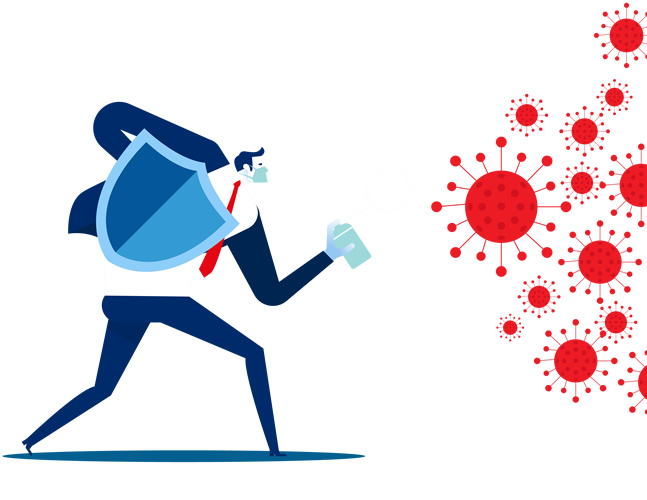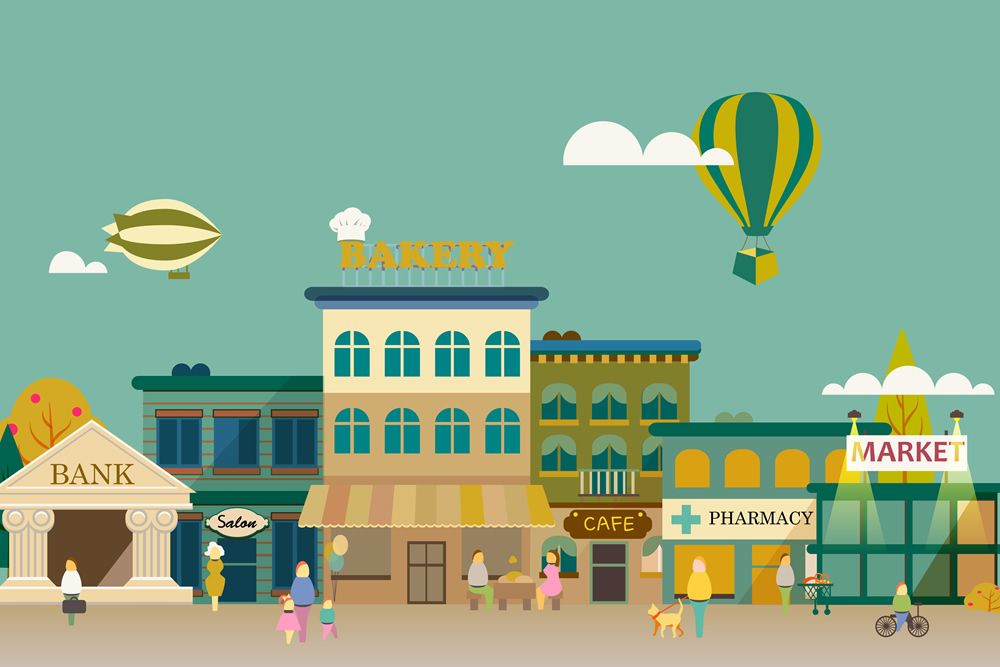FIGHTING to SURVIVE
COVID-19 brings less revenue, more headaches
When Kasey Collins Litt heard on the news in April that the Small Business Administration (SBA) had awarded all the loans in its Paycheck Protection Program (PPP), she was devastated.
The owner of Kritter Keepers Club, a doggie daycare and boarding service in Marietta, Georgia, Litt had been trying for weeks to access federal money to help her keep the 11-employee business afloat during the coronavirus pandemic. She tried to apply for PPP at her multistate bank, but ended up on a waiting list because they were not ready. From an industry webinar, she learned an online portal was taking applications. So she applied through them, but had heard nothing since uploading her documentation. She also submitted a short-form for the SBA’s Economic Injury Disaster Loans (EIDL).
“Again, no warm and fuzzies,” said Litt. “There was no communication whatever from anyone about whether the application had been received or was being reviewed.”
She spent that day thinking, “This is the only way I can even thinking about opening back up.” Then, that evening, she received an email that she had received the entire PPP amount she requested. 
Litt’s challenges in keeping her business operating during COVID-19 are common across the country. The $2 trillion Coronavirus Aid, Relief, and Economic Security (CARES) Act in late March was followed three weeks later by another $484 million in coronavirus relief. Still, shelter-at-home orders and health concerns have stalled commerce, sparking higher unemployment and less consumer spending. Banks and government agencies are swamped, and computer glitches and long wait times increase frustration.
A survey by Emory University’s Goizueta Business School of more than 250 graduates of its Start:ME micro-enterprise accelerator illustrates the challenges small business owners face:
• 76% of Start:ME businesses decreased their hours significantly and/or shut down operations completely.
• 82% experienced significant decrease in sales revenue.
• 41% decreased the number of employees and contractors they typically employ.
• 61% anticipate requiring emergency funding for ongoing business continuity.
“The pandemic is affecting almost everybody in a pretty dramatic fashion,” said Brian Goebel, Goizueta’s managing director of social enterprises. “Many small business owners are seeking continuity capital support, including PPP, EIDL, philanthropic grants, or state and local government funding.”
Clint Coons, founding partner at Anderson Advisors on the West Coast, is seeing first-hand the direct impact the coronavirus-driven slowdown is having on investors and business owners across the country. 
PPP and EIDL are the major programs benefiting small businesses in the government stimulus package. The Paycheck Protection Program provides businesses a loan that will be forgiven if the company spends all the money on payroll (75%), utilities, and rent or mortgage payments over an eight-week period. EIDL, an existing SBA program typically used for natural disasters, was expanded to include businesses affected by COVID-19.
Coons said his firm has submitted applications for these programs on behalf of at least 50 percent of its clients. He added there are additional sources of assistance, including SBA Express Loans and other SBA programs; the new federal tax credit of $5,000 for up to 10 employees; money from public companies like Google and Facebook; grants; and state funding.
“If you work with professionals who understand this, there are a lot of little Easter eggs out there for people to capture defined benefit and stimulate the economy,” he said.
While the CARES Act programs are helping, they have also been plagued by technical glitches and vague requirements.
“There’s still a lot of confusion about processes and steps, and about where to go for what programs,” Goebel said. The SBA said it processed 14 years of loans within 14 days, he noted. “It's an unprecedented situation of not enough capacity to process all the needs.” While a few Start:ME companies got money in the first two PPP rounds, he added, “There's still a need for additional ongoing capital support.” Another source of frustration with PPP was big companies receiving the lion’s share of loans of early funding when major banks prioritized applications from larger clients.
Another source of frustration with PPP was big companies receiving the lion’s share of loans of early funding when major banks prioritized applications from larger clients.
“Right out of the gate we noticed there was a problem: if you didn't have a bank account with the majority of the lenders that you want to apply through, they would not take your application,” Coons said.
The way the program was structured, it was more profitable and less risky for banks to process one $10 million PPP loan for one client than ten $45,000 loans for ten clients.
The second round of funding allocated $30 billion specifically for community banks and credit unions. Coons said he has long advised his clients to have relationships with both larger institutions and community banks.
“I tell them it's nice to bank with the big bank because they have services that can help your business, but you always need to have a community bank on the side,” he said.
A Forbes survey of entrepreneurs found only nine percent of their EIDL applications were funded.
“The program is difficult to wrap your hands around. If you asked me today, ‘How do they determine who qualifies for what amount of money under this program?’, I couldn't tell you,” said Coons, adding that some clients have received $500,000 with no personal guarantee and no collateral. “Although the depleted EIDL received new funding, there are five million applications already in the queue.”
However, these programs only provide temporary assistance until the economy reboots. The Shorenstein Center reported retail and food spending fell 8.7 percent in March, the largest one-month drop in U.S. history. Non-profit research group The Conference Board forecasts the gross domestic product will contract by 3.6 percent to 7.4 percent in 2020, depending on the speed of the economic recovery and of COVID-19 controls. The board’s most likely scenario calls for a 33 percent drop in GDP during the second quarter and none in Q3 before rebounding in the fourth quarter. In their statement dated April 9, 2020 The Conference Board states, “A significant reduction in consumer spending is the primary driver of this weakness.” Domestic spending provides 70% of GDP.
Goebel said that while members’ outlooks vary by industry, most believe they face a slow recovery.
“It's hard to say if it's going to be months or if it's all going to be really easy by the first of June. There's probably more questions and uncertainty than answers at this point,” he said, adding that small business owners want to ensure they can keep employees – who are often family members – and customers safe before reopening.
Both Coons and Goebel said the current slowdown in business provides time for owners to plan how they can reshape their companies to thrive amidst new realities. Coons said Anderson Advisors is shifting from live to virtual seminars using Zoom.
“I don't know if I can get people to show up at events; and if they do, having them sit six feet apart is never going to work in a seminar setting,” he said.
Goebel said many companies in the Start:ME accelerator had little or no online or social media presence. Those owners are now pivoting to offer the same or similar products in a contact-less setting.
“Overnight the way you interact with customers really changed,” he said. “The way they serve their customers is going to need to shift. It does take a little bit of time.”
Goebel cited an Atlanta entrepreneur who sells hair care products through local beauty salons. When salons closed, she turned to Facebook Live and Instagram.
“She’s made videos tutorials on how to care and treat for your own hair. “She's meeting people where they are and answering their questions. ‘And by the way, here is where you can buy my products to help you use the techniques I’m teaching you about.’” Goebel said, adding her sales have climbed 700 percent since shelter-in-place began.
Coons added, “Everyone's business is unique and you need to focus on that going forward.”


